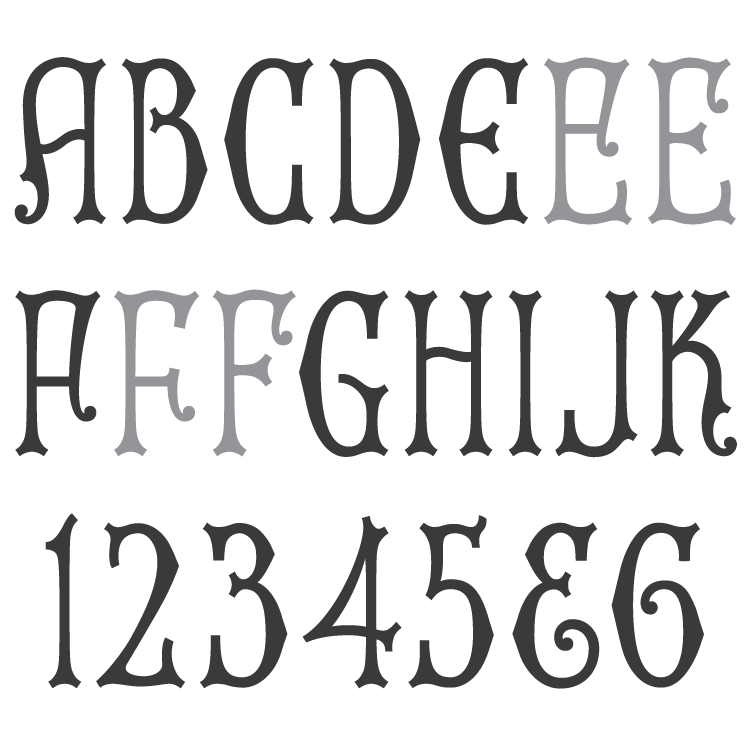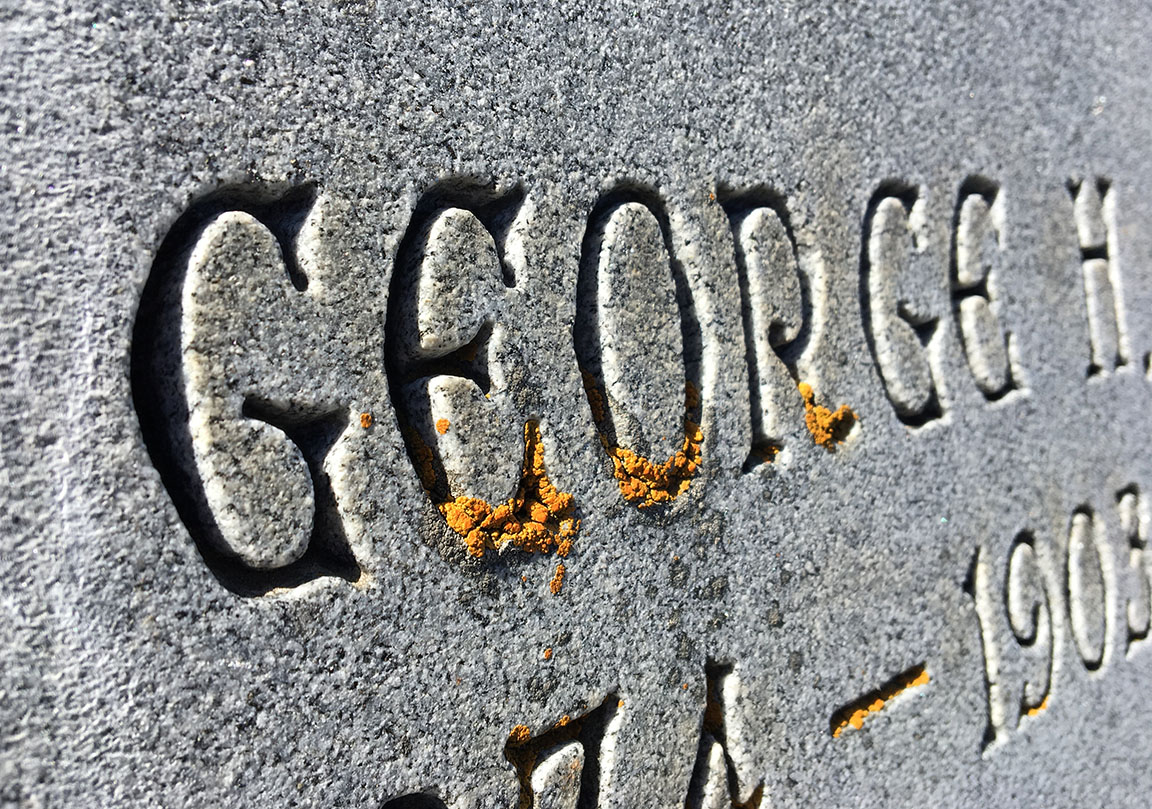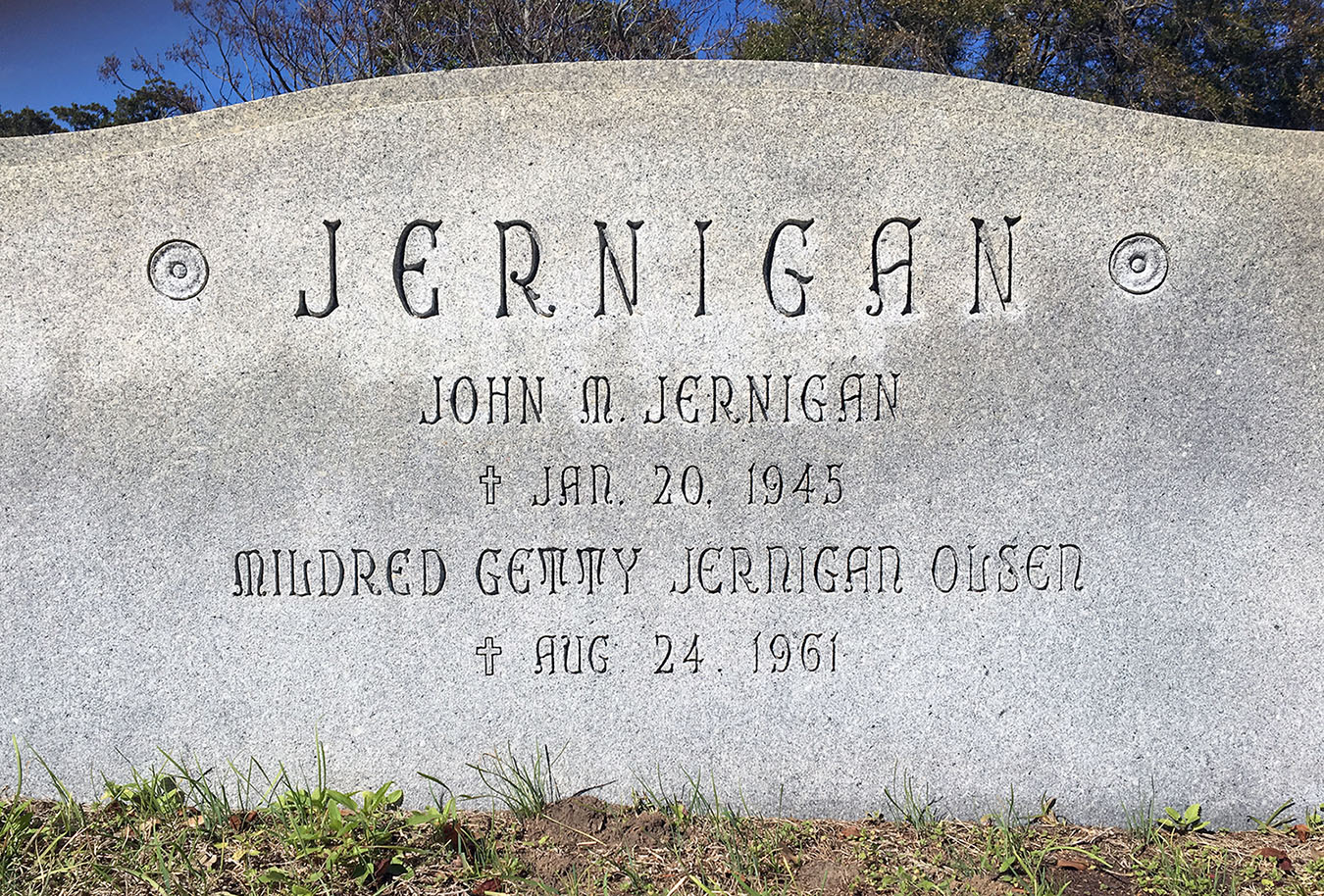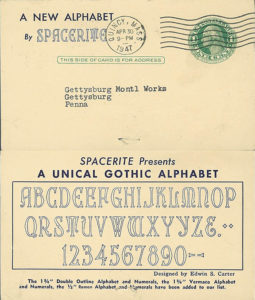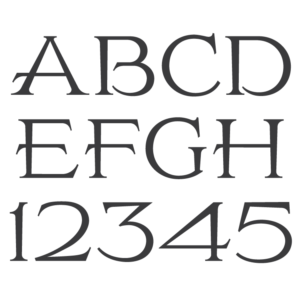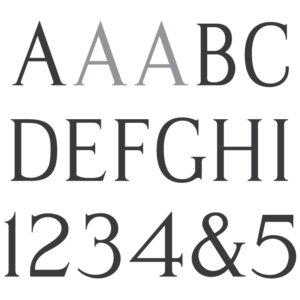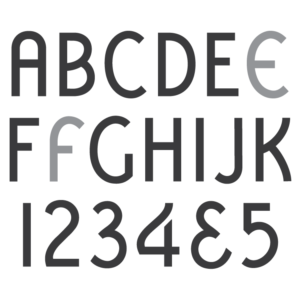Description
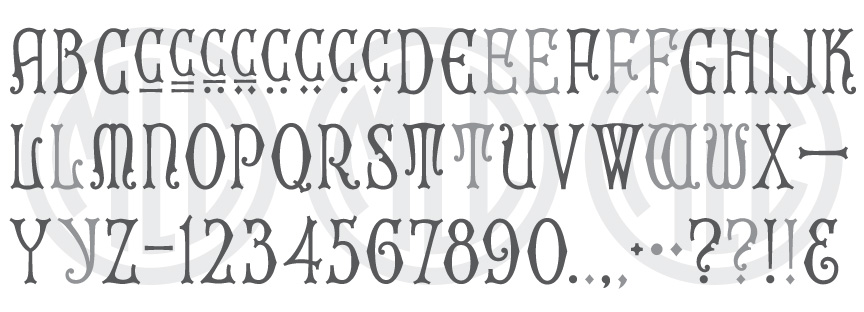
* Only the basic character set is shown here. For a sample character map see the MLC Font Project page. Alternate characters shown in grey.
Classification
Lombardic/Uncial
Usage
This alphabet was created for sandblast engraving and has seen moderate to low usage since its inception, having been digitized early on in the digital era in various monument software including Cochran’s and Monu-Cad.
Designer
The designer of the alphabet was listed by the Spacerite Company as Edwin S. Carter, as shown in the advertisement below. The problem is that a memorial designer named Edwin S. Carter does not show up anywhere in the historical record. However, a memorial designer and lettering expert named Edward S. Carter was very active in the industry at the time. If it is true that the name Edwin is a mistake, this would not be the only time the company misspelled a designer’s name. The Scriptural Art alphabet produced in the 1960s was credited as having been designed by the Kenneson Design Studio, instead of the Kenerson Design Studio, which was Conrad Kenernson’s design business. While it is possible that a designer named Edwin S. Carter did in fact create the alphabet, it is more likely that this alphabet was designed by Edward S. Carter, who was a designer for Marr & Gordon, and also the likely designer for the Spacerite Panel alphabet. Several other designers regularly had their names misspelled in trade magazines and newspaper articles, including Harold Schaller, often misspelled as “Shaller”; Haywood Ellis, often misspelled as “Heywood”; and Kurt Kunz, often misspelled as “Kuntz”.
History
The Spacerite Condensed Roman alphabet was released in 1947, as “A Unical Gothic Alphabet”. It is unclear if the term “Unical” was simply misspelled by the printer, or if the company incorrectly named the font, unaware of the correct spelling. On a promotional mailer from 1947, the misnomer is seen in multiple places on both front and back, so it is unlikely that this was a simple spelling error. By the 1950s the name was corrected to “Uncial” in subsequent promotional materials, and for this reason the MLC has not kept the original incorrect name. Additionally, the alphabet itself is actually more Lombardic in style and not Uncial, though there has commonly been confusion between the two styles.
Characters
The original alphabet included a few more punctuation marks than typical and multiple alternate characters. Alternate characters for ‘E’, ‘W’, and ‘Y’ were included, and the MLC has added to these in order to match modifications made by stencil cutters and memorialists. A second version of ‘E’, two versions of ‘F’, a version of ‘W’ made by flipping ‘M’ upside down, a second ‘L’, and an alternate ‘T’ are all included. The punctuation included a period, left and right dash sections, bullet, and ampersand. Some digitized versions did not use the original round punctuation, but instead replaced it with angled marks. The MLC included similar angled punctuation in order to match existing memorial inscriptions in the cemetery. As always, the MLC has included multiple versions of lowercase ‘c’ with various line and dot combinations used for Gaelic surnames. All alternate characters and punctuation marks are included as alternates available in software that supports OpenType features.

